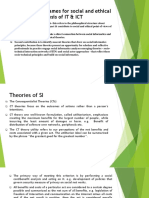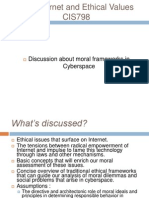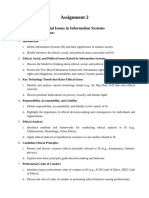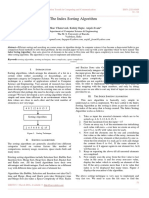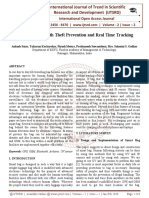0% found this document useful (0 votes)
11 views2 pagesLecture 3 - Discussion
The document discusses ethical considerations in various scenarios involving technology and human behavior, applying different ethical frameworks such as Kantianism, Act Utilitarianism, and Social Contract Theory. It also analyzes the issues faced during the Iowa caucus, attributing failures to a combination of technology and human factors, including inadequate training and communication. The conclusion emphasizes that the technological failure stemmed from insufficient preparation and user support.
Uploaded by
Shanmuga BharathCopyright
© © All Rights Reserved
We take content rights seriously. If you suspect this is your content, claim it here.
Available Formats
Download as DOCX, PDF, TXT or read online on Scribd
0% found this document useful (0 votes)
11 views2 pagesLecture 3 - Discussion
The document discusses ethical considerations in various scenarios involving technology and human behavior, applying different ethical frameworks such as Kantianism, Act Utilitarianism, and Social Contract Theory. It also analyzes the issues faced during the Iowa caucus, attributing failures to a combination of technology and human factors, including inadequate training and communication. The conclusion emphasizes that the technological failure stemmed from insufficient preparation and user support.
Uploaded by
Shanmuga BharathCopyright
© © All Rights Reserved
We take content rights seriously. If you suspect this is your content, claim it here.
Available Formats
Download as DOCX, PDF, TXT or read online on Scribd
/ 2


